.png)
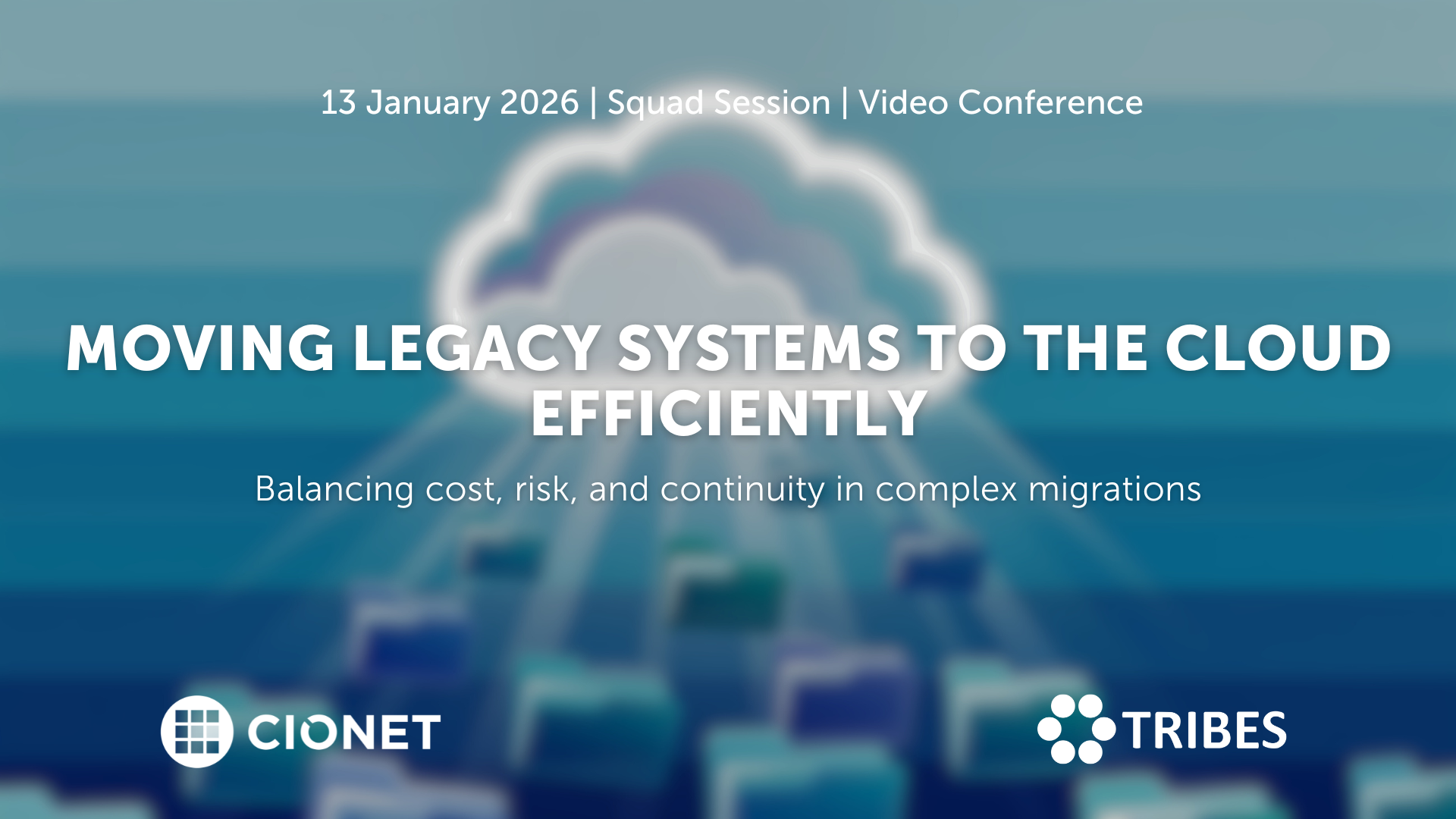
Belgium 13-1-26 Squad Only Virtual english
Migrating legacy systems to the cloud remains one of the toughest balancing acts in IT. Every choice affects stability, cost, and trust at once, and what starts as a modernisation effort quickly turns into a negotiation between ambition and reality. Suddenly budgets rise, dependencies appear late, and timelines tighten as old architectures collide with new expectations. In the end, success depends on sequencing, ownership, and aligning business priorities with infrastructure limits, and not only on technical readiness. Making it work requires more than a plan on paper. Knowing which systems genuinely belong in the cloud, which can wait, and which should stay put shapes the entire roadmap and defines its success. Each refactoring decision sets the level of future flexibility, but it also drives cost and risk. The trade-offs between speed, sustainability, and resilience only become clear once migration begins and pressure builds. Let’s discuss how to plan migrations that stay on track, manage hidden dependencies, and handle downtime with confidence. Let’s also discuss how governance, testing, and vendor coordination keep progress visible and credible. Are you in? A closed conversation for those who turn cloud migration from a disruption into a long-term advantage.
Read More.png)
Belgium 20-1-26 All Members Physical english
CIOs today are being judged less as technology leaders and more as portfolio managers. Every euro is under scrutiny. Boards and CFOs demand lower run costs, higher efficiency, and clear ROI from every digital initiative. Yet, they also expect CIOs to place bets on disruptive technologies that will keep the enterprise competitive in five years. This constant tension is redefining the role. In this session, we go beyond FinOps and cost reporting to tackle the strategic financial dilemmas CIOs face.
Read More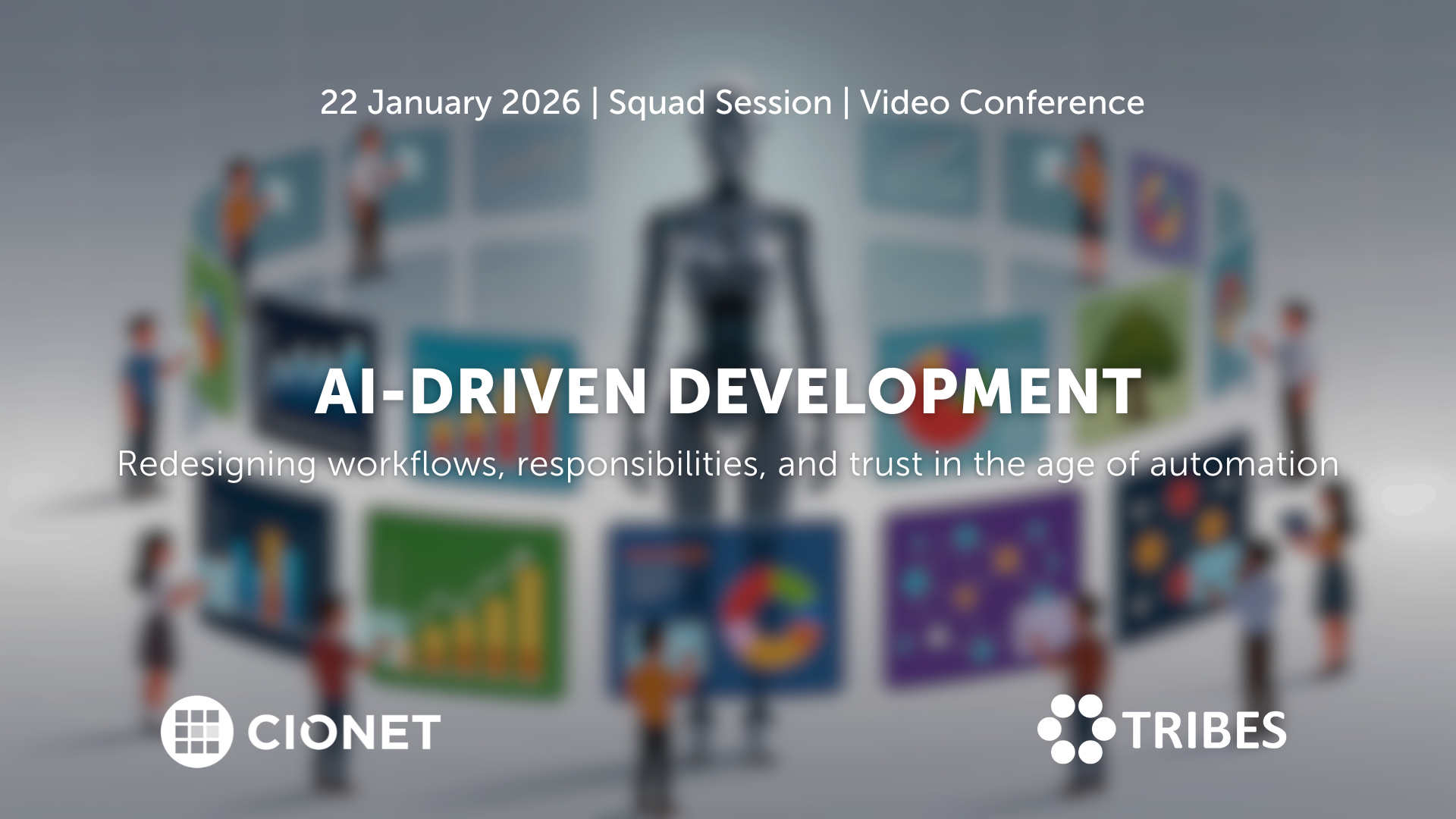
Belgium 22-1-26 Invitation Only Virtual english
AI coding assistants entered development teams quietly, but their impact grows by the day. What started as autocomplete now shapes architecture decisions, documentation, and testing. And when productivity gains are visible, so are new risks: security blind spots, uneven quality, and the slow erosion of shared standards. Teams move faster, but not always in the same direction. The challenge has become integration rather than adoption. And new questions have risen: how do you blend automation into established practices without losing oversight? When is human review still essential, and what should the rules of collaboration between developer and machine look like? As AI tools learn from proprietary code, where do responsibility and accountability sit? Let’s talk about how to redefine those workflows, balancing creativity with control, and protecting code quality in a hybrid human-AI environment. A closed conversation on where AI accelerates progress, where it introduces new debt, and how development culture must evolve to stay credible.
Read More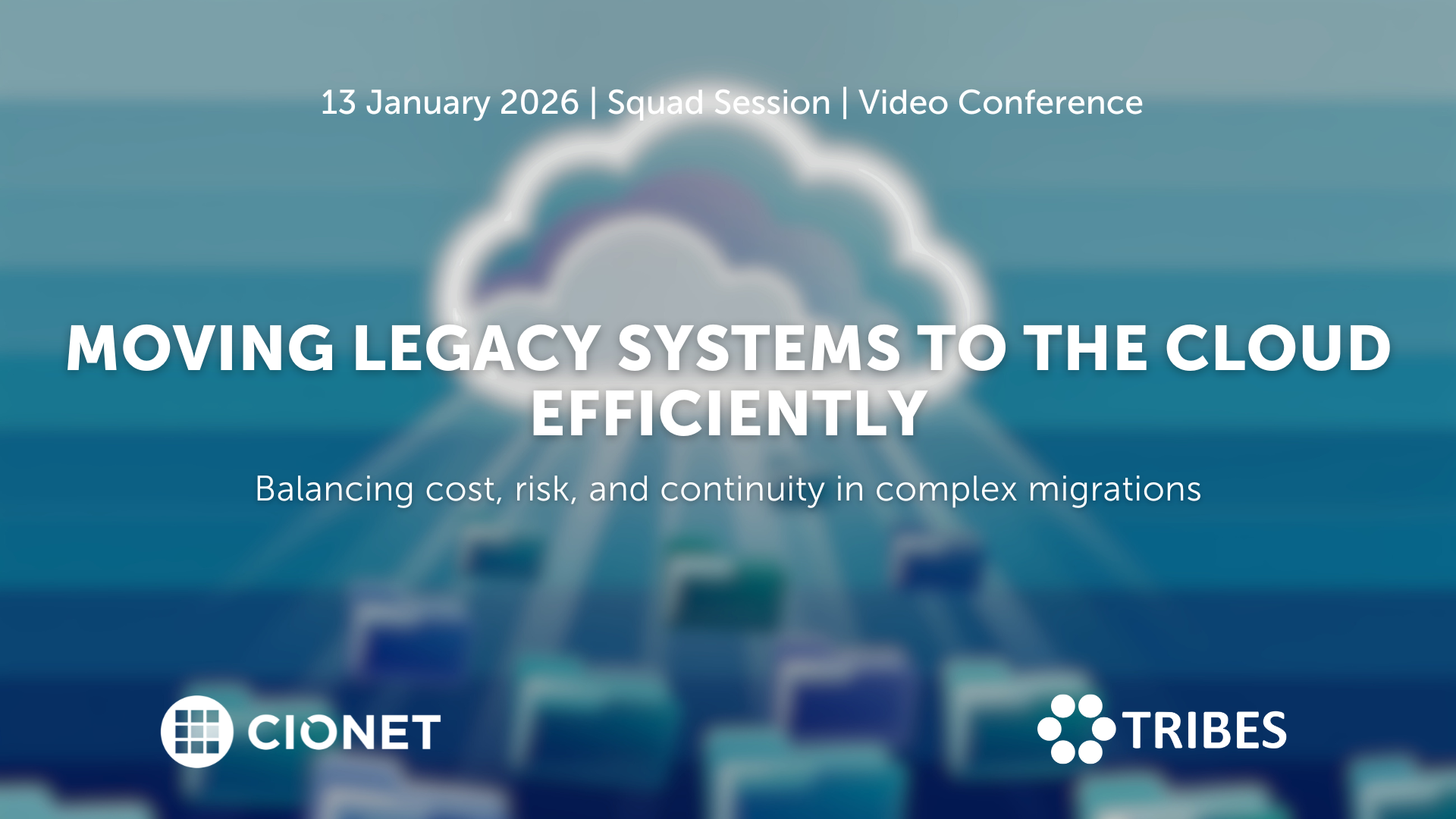
January 13, 2026 Squad Session Invitation Only Virtual english
Migrating legacy systems to the cloud remains one of the toughest balancing acts in IT. Every choice affects stability, cost, and trust at once, and what starts as a modernisation effort quickly turns into a negotiation between ambition and reality. Suddenly budgets rise, dependencies appear late, and timelines tighten as old architectures collide with new expectations. In the end, success depends on sequencing, ownership, and aligning business priorities with infrastructure limits, and not only on technical readiness. Making it work requires more than a plan on paper. Knowing which systems genuinely belong in the cloud, which can wait, and which should stay put shapes the entire roadmap and defines its success. Each refactoring decision sets the level of future flexibility, but it also drives cost and risk. The trade-offs between speed, sustainability, and resilience only become clear once migration begins and pressure builds. Let’s discuss how to plan migrations that stay on track, manage hidden dependencies, and handle downtime with confidence. Let’s also discuss how governance, testing, and vendor coordination keep progress visible and credible. Are you in? A closed conversation for those who turn cloud migration from a disruption into a long-term advantage.
Read More
January 22, 2026 Squad Session Invitation Only Virtual english
AI coding assistants entered development teams quietly, but their impact grows by the day. What started as autocomplete now shapes architecture decisions, documentation, and testing. And when productivity gains are visible, so are new risks: security blind spots, uneven quality, and the slow erosion of shared standards. Teams move faster, but not always in the same direction. The challenge has become integration rather than adoption. And new questions have risen: how do you blend automation into established practices without losing oversight? When is human review still essential, and what should the rules of collaboration between developer and machine look like? As AI tools learn from proprietary code, where do responsibility and accountability sit? Let’s talk about how to redefine those workflows, balancing creativity with control, and protecting code quality in a hybrid human-AI environment. A closed conversation on where AI accelerates progress, where it introduces new debt, and how development culture must evolve to stay credible.
Read More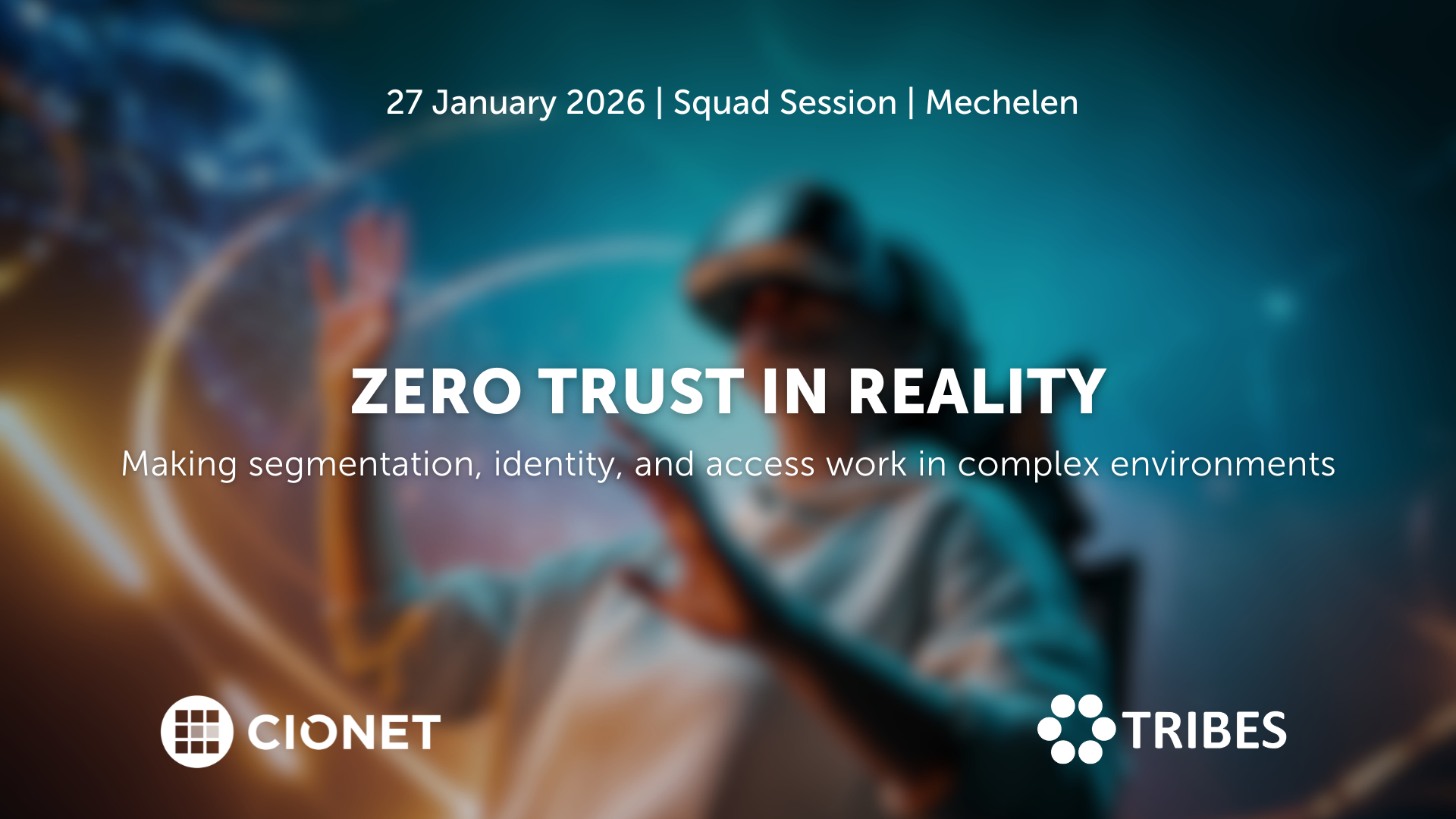
January 27, 2026 Squad Session Invitation Only Physical english
Zero Trust sounds simple on paper: trust no one, verify everything. But once you start implementing it, the fun begins. Legacy systems, hybrid networks, and human habits don’t read the manual. The idea is solid; the execution, not so much.
Read More
CIONET Trailblazer: AI Transformation: Bridging the Cultural Divide to Achieve Competitive Advantage
Published on: December 17, 2025 @ 9:16 AM
AT&T embraces intelligent automation at scale
Six years into its robotic process automation journey, AT&T has implemented more than 3,000 bots, developed an automation center of excellence, and realized a 20x return on investment.
For CIOs riding today’s rising wave of robotic process automation (RPA), leading-edge adopters whose mature implementations have paid off can provide invaluable lessons about how to make the best of the technology and where its use can lead.
Telecom titan AT&T is one such enterprise, having began RPA trials in 2015 to reduce repetitive tasks for its service delivery group, which had a large volume of circuits to add at the time, as well as various services in play for provisioning networks, says Mark Austin, vice president of data science at AT&T.
“These things would come in large batches, and they would have Excel files and people were literally typing these things in individually into the systems because they weren’t set up for batch,” Austin says. “We heard about RPA at the time, and we started trying it and all of a sudden we were able to automate one process and then the next process and it kind of grew from there.”
With the technology in its early days, the first thing AT&T IT did was go to its compliance and security experts for guidance on governing RPA, which helped the team make its automation tools stable and secure. The next step was to win the battle for hearts and minds within the company by turning skeptics into believers that automation could make employees’ lives better. Initial efforts focused on addressing unpopular, monotonous tasks such as order entry.
The pilots helped demonstrate how automation could fit into daily operations and workflows.
Within a year, AT&T had implemented 350 automation bots. More than six years into its RPA journey, AT&T has implemented more than 3,000 automation bots. Austin says RPA has helped AT&T recognize hundreds of millions of dollars in annualized value, saved 16.9 million minutes of manual effort each year, and shown a 20x return on investment.
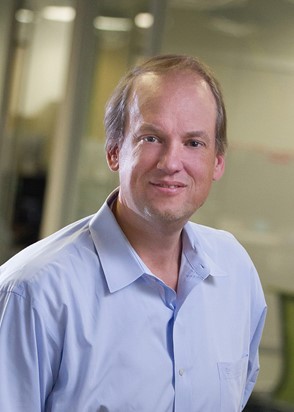
MARK AUSTIN, VICE PRESIDENT OF DATA SCIENCE, AT&T
With RPA ingrained in its business process DNA, AT&T opted to combine automation with data science and the chief data office because it believes the future is in smarter bots that leverage AI functionality, such as OCR or natural language processing (NLP), an emerging strategy often referred to as intelligent automation.
“Tying those things together is pretty powerful,” says Austin, who runs AT&T’s data science, AI, and automation group.
By way of example, Austin points to what he considers one of the company’s biggest RPA successes: a bot his group has created that uses OCR to scan vehicle registration documents and NLP to understand those documents and any necessary actions AT&T must take in support of more than 10,000 technician vehicles, one of the largest vehicle fleets in the US. If payments are required, the bot can also trigger the payment process.
Being able to create automation bots such as these was invaluable when the COVID-19 pandemic first hit, Austin says.
“There were a lot of customers that were calling and saying they wanted to move the charges from this org to that org in their company,” Austin says. “Someone might call up and say they wanted to move 5,000 lines. What we do now is we have them interface with [interactive voice response (IVR)]. The IVR detects what they want to do and then it triggers a bot to send them a secure form to fill out. They fill out the form, submit that back, and we run the bot to automate the process to get it going.”
The company has also rolled out bots to help customers avoid overage charges. One such bot monitors usage of AT&T’s integrated voice, video, messaging, and meeting services, more than 21,000 records per minute, looking for overage charges above a pre-set amount. If it encounters one, it automatically notifies the customer and the assigned AT&T sales rep.
After the first year of pilots, with demand for RPA spreading rapidly through the business, AT&T created an automation center of excellence (COE) to accelerate implementation.
“When you’re the size of AT&T, and you’ve had so many mergers and so many systems, there’s just lots of manual processes,” Austin says, explaining why it was essential to create a COE that could focus on implementing automation throughout the organization.
The centralized automation team now boasts 20 full-time employees and some contractors as well. Austin notes that the real secret to successfully scaling automation is spreading RPA knowledge throughout the organization. The COE helps develop, deploy, manage, measure, and enable automation projects across AT&T. More importantly, it seeks to educate subject matter experts in automating their own tasks and processes.
“Pretty early on, we figured out that if you really want to scale, you’ve got to move to training others how to do it, teach them how to fish, so to speak,” Austin says. “Ninety-two percent of everything we do with the 3,000 bots is done outside of my team. If you’re not an IT person, it’s maybe 40 hours of training.”
The company has trained more than 2,000 citizen RPA developers who have built the lion’s share of AT&T’s 3,000 automation bots. To support them, the company has created a “Bot Marketplace” where citizen developers can “shop” for ready-to-use tools and support to get their automation solutions up and running. The marketplace stores and shares low-code and no-code automation solutions and tools. It now adds roughly 75 new blueprints of reusable automation components every month.
As RPA knowledge has spread, Austin says the lines of business have started forming their own automation teams, creating a hybrid model in which the COE provides tools and support, while front-line teams in the lines of business implement automation.
“They even have some new job titles popping up,” Austin says. “We’ve got a couple process automation managers and automation developers that we’re seeing out there. On our team, we’re continuing to move to automate the process, the platform, and then tie in the data science side.”
When it comes to lessons learned, Austin has some advice for others out there who may be starting their RPA journey. First, start small and get some wins. Second, don’t try to keep things centralized. While the center of excellence has been essential to AT&T’s RPA journey, just as important has been democratizing the effort to scale the proliferation of automation within the company. Finally, evangelization is important. AT&T has created an internal automation summit where groups can present their automation projects to the rest of the company, show off their successes, and help spark new ideas.
173 Views 0 Likes Read More
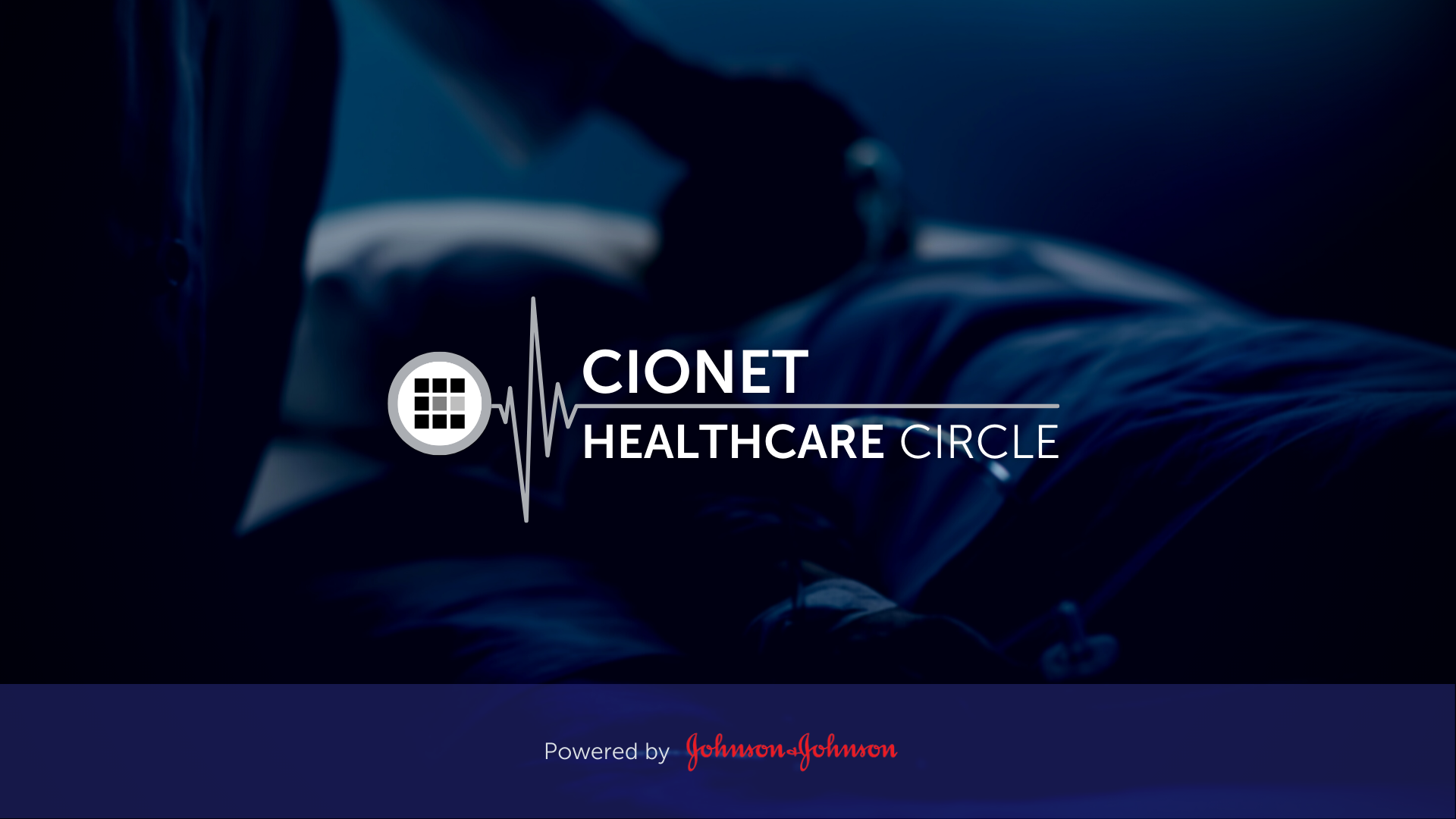
Digital Transformation is redefining the future of health care and health delivery. All stakeholders are convinced that these innovations will create value for patients, healthcare practitioners, hospitals, and governments along the patient pathway. The benefits are starting from prevention and awareness to diagnosis, treatment, short- and long-term follow-up, and ultimately survival. But how do you make sure that your working towards an architecturally sound, secure and interoperable health IT ecosystem for your hospital and avoid implementing a hodgepodge of spot solutions? How does your IT department work together with the other stakeholders, such as the doctors and other healthcare practitioners, Life Sciences companies, Tech companies, regulators and your internal governance and administrative bodies?
Read More
The Telenet Business Leadership Circle powered by CIONET, offers a platform where IT executives and thought leaders can meet to inspire each other and share best practices. We want to be a facilitator who helps you optimise the performance of your IT function and your business by embracing the endless opportunities that digital change brings.
Read More
Découvrez la dynamique du leadership numérique aux Rencontres de CIONET, le programme francophone exclusif de CIONET pour les leaders numériques en Belgique, rendu possible grâce au soutien et à l'engagement de nos partenaires de programme : Deloitte, Denodo et Red Hat. Rejoignez trois événements inspirants par an à Liège, Namur et en Brabant Wallon, où des CIOs et des experts numériques francophones de premier plan partagent leurs perspectives et expériences sur des thèmes d'affaires et de IT actuels. Laissez-vous inspirer et apprenez des meilleurs du secteur lors de sessions captivantes conçues spécialement pour soutenir et enrichir votre rôle en tant que CIO pair. Ne manquez pas cette opportunité de faire partie d'un réseau exceptionnel d'innovateurs numériques !
Read More
CIONET is committed to highlighting and celebrating female role models in IT, Tech & Digital, creating a leadership programme that empowers and elevates women within the tech industry. This initiative is dedicated to showcasing the achievements and successes of leading women, fostering an environment where female role models are recognised, and their contributions can ignite progress and inspire the next generation of women in IT. Our mission is to shine the spotlight a little brighter on female role models in IT, Tech & Digital, and to empower each other through this inner network community.
Read More


-Apr-01-2022-10-58-34-57-AM.png)







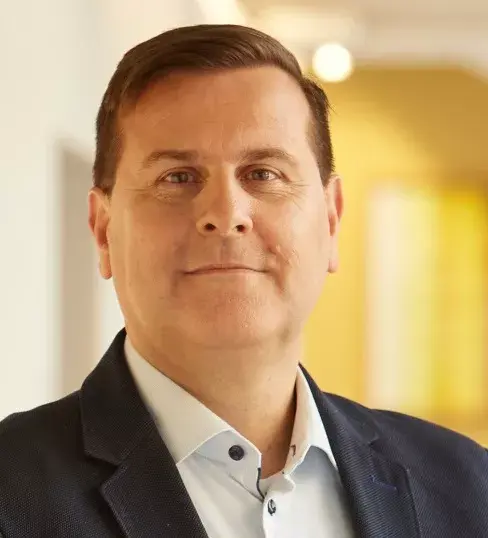

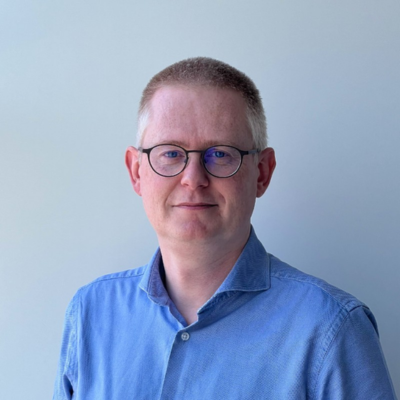

-Dec-13-2023-10-53-15-5032-AM.png)




-Jun-12-2023-01-23-11-7540-PM.png)





-Apr-01-2022-10-58-34-68-AM.png)










-2.jpg)




-Sep-01-2022-02-47-55-60-PM.png)
-Nov-22-2023-08-56-42-6802-AM.png)
.png)

Would you like to know more about CIONET Belgium, membership or partnership opportunities? Do you have feedback or any other question? Send us a message!
You can either send us a registered handwritten letter explaining why you'd like to become a member or you can simply talk to us right here!